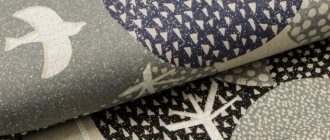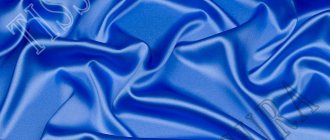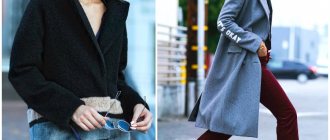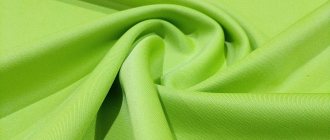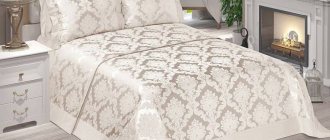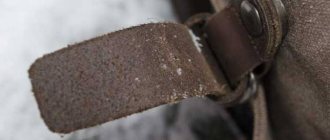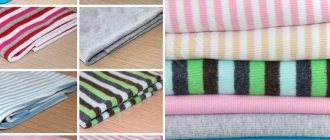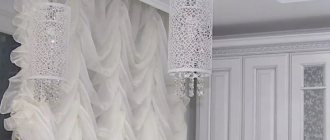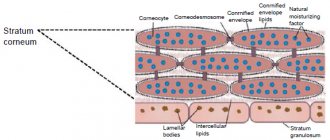In the modern world, there are a number of problems associated with choosing suitable clothing, namely, one that fits perfectly on the figure. To do this, they use different cuts, patterns, fitting and other methods.
However, there is a fabric that can be easily processed and is able to fit closely to body shapes and is stretchy and resilient. It's called stretch . It simplifies the work of seamstresses and has a number of its own features, and it is also very similar to synthetic knitwear.
origin of name
The origin of the name stretch comes from the English word “stretch”, which means to stretch, to stretch. Therefore, we can assume that both ways are correct.
Stretch is a fabric that has an elastic structure due to the addition of synthetic fibers such as lycra and spandex to the material. The stretchability of the stretch depends on the proportion of elastic threads contained in the material.
Stretch characteristics:
- Elasticity and smoothness. They help to fit any figure and emphasize the structural features of the body.
- Strength and stability. Since the material is elastic, it does not tear, which increases the period of wearing clothes.
- It allows air to pass through well, which promotes normal sweating.
- Hygroscopicity. Absorbs moisture well.
- Does not cause allergies. The fabric does not cause any allergic reactions at all, which is a positive feature for people who are prone to such reactions.
- Possibility of long-term use of fabric.
How is stretch film made?
The raw materials for the production of stretch film completely determine the category of the finished material: there are primary and secondary film sheets. Technical products made from recycled materials cost 20% less and are used for working with industrial facilities, since the composition may contain synthetic waste. TU stretch film is not regulated by GOST.
To give the film specific characteristics, a certain stretch film production technology is used.
Blow extrusion
The film or material turns out to be cheap, but the characteristics of the material do not allow it to be purchased for packaging purposes. The multilayer fabric is durable, but the pre-stretch stretch film does not exceed 75%.
Flat slot extrusion
Consumers of stretch film in 80% of cases choose products made using this method. As a result of pouring heated raw materials onto a cooling drum, a five-layer fabric is obtained, in which each layer provides specific properties:
- Adhesion;
- Stretching;
- Rigidity;
- Antistatic properties.
The density of stretch film after flat-slit extrusion varies from 10 to 23 microns, the material is transparent, durable and rigid over the entire area.
Gallery: stretch fabric and products made from it (25 photos)
How to calculate the length of stretch film in a roll
If you want to check the integrity of the manufacturer when purchasing stretch film and recalculate the footage of the roll, you can use the following formula:
Length (meter) = Roll weight (kg) x 106/ Width (mm) x Thickness (µm) x 0.92
Where: 0.92 is the density of linear polyethylene, g/cm3
For example, you have a roll of film that is 17 microns thick, 500 mm wide and weighs 2.34 kg (excluding the weight of the spool). Let's calculate how many meters of stretch film it contains:
Length = 2.34 x106/500x17x0.92 = 300 m. Answer: 300 meters of film per roll.
In order to calculate the consumption of SP, you will need its elongation coefficient (stretchability, %), which differs for machine and manual stretching.
Main classification
Often stretch is made from a mixture of different fabrics . Let's consider several variations:
- Bi-stretch is a fabric that can stretch in both directions. This is possible by adding elastic threads in two directions.
- Mono-stretch - stretches in one direction only. Threads are added in one direction only.
- Stretch jeans (also called denim) are characterized by their density. Used for sewing denim clothing. To make a durable material, polishing is necessary.
- Satin is a dense fabric with a smooth structure and a glossy sheen. Often used for sewing evening dresses and various carnival costumes.
- Velvet is a knitted fabric with a fleecy base, which also has a glossy sheen and a dense structure. Essential for sewing tight-fitting evening dresses.
- Satin is a stretch material with a very strong thread structure. It is usually used for sewing children's clothing.
- Jacquard is a dense material with a characteristic pattern. Necessary for sewing women's and men's suits.
- Gabardine is an elastic fabric with a characteristic scar-shaped pattern.
- Leather - this fabric can be either artificial or natural. The peculiarity lies in the processing and sewing technique, as well as the elasticity of such material.
- Velor is characterized by the presence of dense pile on the surface, which has a pleasant and soft structure to the touch.
- Viscose - when combining two of these fabrics, you can get a dense, opaque material that will have excellent resistance to deformation and good drape ability.
- Cotton stretch is a dense material that has its own characteristics. Mixing stretch and cotton led to improved properties of the material. Nowadays, cotton knitwear is often used to make various clothes, it is universal in its structure, and has many advantages.
- There is also such an unusual fabric - barbie. The description of the material is quite simple. The material consists of cotton and elastane, the structure is a bit like jeans. The name comes from the color, “like the outfit of a Barbie doll.”
Properties and characteristics of stretch film
Stretch film is a transparent packaging material made from polyethylene and its copolymers.
Properties of stretch film:
- can stretch 4-5 times its original length;
- after stretching, the material tends to take its original shape;
- has increased resistance to puncture and tearing;
- has high adhesion to its own surface and low adhesion to the packaged product.
The higher the ambient temperature, the faster the contraction force of the stretch film will weaken. If cargo packaged in an unheated workshop in winter Yekaterinburg is sent to Egypt, then it is natural to expect that the packaging will weaken during transportation.
Product care requirements
In order for the purchased item to retain its qualities and also remain elastic, the following care requirements must be met:
- Wash only in gentle cycle.
- The washing temperature should be no more than 30 degrees.
- When drying clothes, it is unacceptable to expose them to sunlight.
- When ironing fabric, you must carefully and accurately move the iron over the fabric and use it at a temperature of no more than 100 degrees. Do not use steam for smoothing.
How to care for stretch fabric?
Stretch fabric does not require demanding care, these products can be machine washed at any convenient temperature, and the products will not be damaged in any way. In addition, items made from stretch fabric can be dried in the drum of a washing machine; drying them without any heating devices, in natural conditions, would be a good solution. If clothes have decor, they must be washed on a delicate cycle.
Ironing such fabric has its own characteristics: it is not recommended to iron from the front side, it is better to limit yourself to steaming from the back side, but often stretch fabric does not need ironing. Products made from such fabric cannot be boiled; they may change shape or shrink. If you follow these recommendations, products made from stretch fabric will serve you for a long time and delight you with their quality and appearance.
Types and their properties
In fact, modern industry offers a huge variety of stretch fabrics that share one property - high elasticity. We will list only the most popular
- stretch jeans is a fashionable fabric that is used to make stylish youth clothing, it is quite dense and slightly stiff, and has a characteristic denim texture;
- stretch satin is an elegant fabric, dense and opaque, with a pleasant shine and used for sewing evening and stage dresses;
- stretch cotton - a variety of fabrics based on plant materials, including poplin, cotton, gabardine, etc.; have all the properties of cotton, but stretch much better;
- stretch fabrics based on wool , which very softly and elegantly fit the figure and retain heat perfectly;
- stretch linen is a group of textiles that includes linen fabrics with the addition of elastane or lycra.
In general, there are a lot of stretch fabrics: velvet, mesh, satin, guipure, velor, chiffon, viscose and sometimes rayon. As a rule, they are thin, some are lace, and are used for sewing light clothing. Therefore, the group of textile materials listed above is called stretch dress fabrics.
There is another group, which includes denser, heavier textiles. These are the so-called stretch suiting fabrics, for example: crepe, tiar or twill, although the latter can be lighter. Such materials are, as a rule, used to make a variety of suits, jackets, and business-style clothing.
In addition, there are also stretch lining fabrics. Usually they have a single color: black, gray, white. These are lightweight, practical canvases that often come with the prefix “light”.
Types of mono-stretch fabrics
Even a small addition of lycra can change the properties of any material that immediately receives the “stretch” prefix. The main types of textiles with one-way stretching:
- Stretch jeans are a dense, medium-hard material that is resistant to mechanical stress. Used for comfortable everyday wear: trousers, dresses, shirts and jackets. Denim pants made from this material fit perfectly on the figure.
- Jersey is an elegant fabric made popular by Coco Chanel. Used for sewing dresses, suits and underwear. The composition can be synthetic and mixed. The fabric is highly elastic in the transverse direction, but has little stretch in length. Looks beautiful with folds and draperies. The material has also found use in the production of bathrobes, sleepwear and children's clothing.
- Thanks to elastane, stretch linen becomes more comfortable and almost does not wrinkle.
- Poplin is a ribbed cotton fabric for bed linen and summer clothing. Soft and dense material with high hygienic properties.
- Stretch velvet is a rich fabric with a good fit. Designed for evening and theater wear.
- Barbie is a suiting fabric for business wear and school uniforms. It is soft, durable and form-fitting due to its light stretch. Provides air exchange, does not wrinkle and lasts a long time.
- Stretch silk, which successfully combines strength and elasticity with gloss and chic. Suitable for party dresses, bedding and underwear.
- Tiar is a costume fabric, strict and versatile. It has a smooth surface with a small, diagonal ridge. 2% elastane content for a perfect fit. Suitable for dresses, jackets and suits.
- Stretch wool softly fits the figure, warms and does not wrinkle during prolonged sitting.
- Gabardine is a durable material made from wool or cotton with the addition of synthetics. It is distinguished by diagonal weaving of warp and weft threads. Keeps its shape well, light and thin.
- Bengaline is an airy and beautiful material, similar to silk. Produced mixed, natural or synthetic. Lycra content 2-5%. It does not wrinkle, retains its shape and is soft to the touch. The peculiarity is that the material stretches well in the longitudinal rather than transverse direction.
Technical packaging film – what is it?
It is convenient to use this material not only in the food industry. Transparency, low cost, lightness, and ease of use have made it popular in the packaging industry.
It is called technical packaging film if recycled materials are used for its production. Externally, it differs from the primary one in a gray tint. The primary material is as transparent as food grade, but does not allow air to pass through. Its complete impermeability makes it an airtight package for various product groups.
Films are classified according to the method of application:
- for manual packaging;
- for machine packaging.
The roll width for manual use is usually standard and is 450-500 mm. The winding thickness ranges from 100 to 450 meters. The thickness of the material does not exceed 23 microns. For machine use, rolls of the appropriate width are selected, since the equipment initially requires the selection of rolls of a certain format. The thickness of the material should be greater than for manual packaging - up to 40 microns due to the greater tensile force that occurs when using film.
Application area
Stretch fabrics are used everywhere. Thanks to their spectacular appearance, they have earned great love from consumers. Stockings and tights and spectacular underwear are made from such materials.
The fabrics are used for tight-fitting trousers, dresses, skirts, stylish suits and other types of modern clothing. They make delightful evening dresses, wedding and stage dresses.
Stretch is also used in shoemaking. For example, trendy stocking boots are made from just such materials.
Stretch fabric: advantages and disadvantages
The advantages of woven fabric include:
- provides an ideal fit, taking into account the anatomical features of the body;
- increases the wear resistance of the product while maintaining all the advantages of natural materials;
- stretch fabric is multifunctional and is successfully used in sewing underwear and home textiles for the interior.
The disadvantages of the material include the strong shrinkage that the fabric gives when washed. Products made from it must be washed and ironed under strict adherence to the conditions specified on the label. Read more in the “Care” section.
Yarn
Stretch yarn is used for knitting items according to the figure. The stretch property is due to the presence of lycra, which can only be 2%, but the knitwear fits the body perfectly. Yarn can consist of cotton, microfiber, wool, acrylic, viscose, bamboo. Knitting with it is comfortable, because the threads are soft and light. Knitting needles and a hook can be used in this work. When knitting, the yarn does not curl or fluff.
Things made from stretch yarn look elegant. At the same time, things can have different patterns. The threads are used for knitting dresses, corsets, knee socks, tights, and stockings that do not wrinkle.
The yarn is used to make bags, toys, and children's things. For the summer, comfortable clothing would be a dress made of stretch cotton, which will be comfortable even in hot weather. Stretch viscose is used for knitting blouses, dresses, skirts, sundresses. Stretch velor is used in sewing lightweight dresses.
If you need a high-quality swimsuit, then you should choose stretch microfiber, which dries perfectly. And stretch bamboo perfectly absorbs moisture. The products do not deform, do not wrinkle, do not fade in the sun, and do not lose their appearance with wear. But there are also disadvantages. Yarn is difficult to find on sale. Finished items shrink a lot after the first wash. Clothes take a long time to dry.
Since the stretch shrinks, the knitted sample must be washed, and then the loops must be calculated. When knitting, the thread must be slightly tensioned so that the item does not become too big. Washing must be done by hand at a temperature of no more than 40 degrees. You can't iron things. Knitted and sewn products are comfortable and practical.
Application options
Packaging items for long-term storage. With the help of stretch, you can carefully pack things that are subject to long-term storage: shoes, children's toys, bags, suitcases, that is, everything that sometimes needs to be put away on the mezzanine or in the pantry. And protect from pollution, moisture, dust. Some items are so bulky that it is impossible to find a box or drawer for them. Transparent film is suitable for protecting any items, regardless of their size and shape. Plus, it doesn’t take up space and allows you to store more things.
Protection of furniture and equipment during repairs. It is not always possible to remove upholstered furniture and household appliances from the apartment during renovation work. To avoid staining them with construction dust, you can use cheap stretch. Tighten objects with it, carefully covering every centimeter. After repair, all you have to do is cut the packaging and throw it away.
Packing of goods. The traditional application is packaging cargo on pallets. Stretch is used to secure bags of building materials, blocks, bags of cereals, tetra packs of juice and wine, and packages of water on pallets. By wrapping the load in several layers of polyethylene strip, you can be sure that it will not fall apart or get lost on the road. Plus, the material becomes additional protection against precipitation on the way.
Installation of greenhouses and mini-greenhouses. The most economical option for a greenhouse is arcs with packaging film fixed on them. It is cheaper than regular polyethylene and less prone to tearing. Polyethylene breaks easily in windy weather and is not able to withstand hail. Stretch is not afraid of the wind, as it stretches and does not tear. And even after the most difficult weather conditions, it will maintain its integrity, so it will last the entire summer season. In terms of light transmission it is not inferior to ordinary PE film and is safe for plants.
